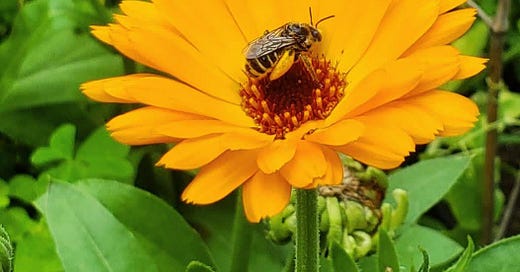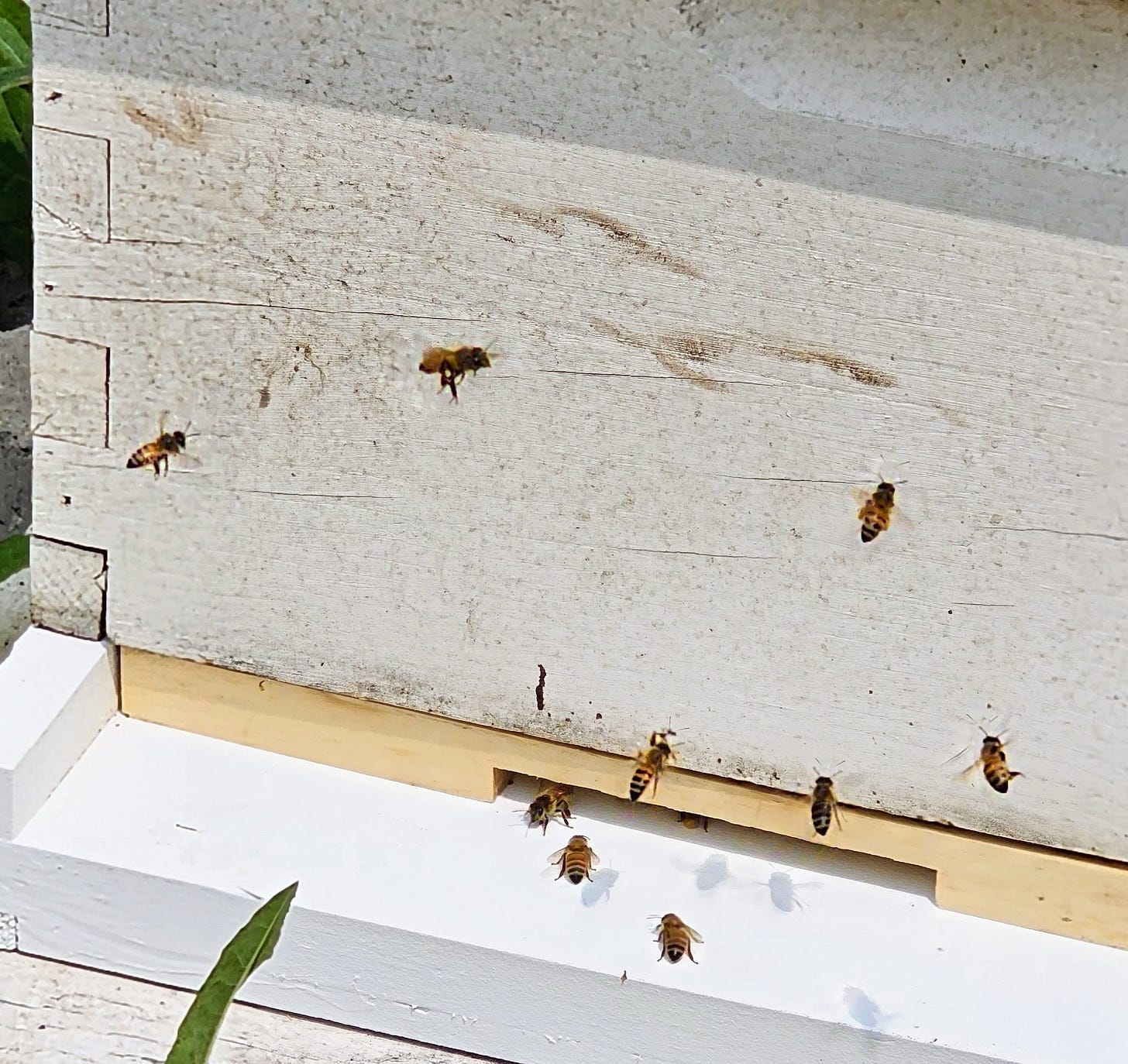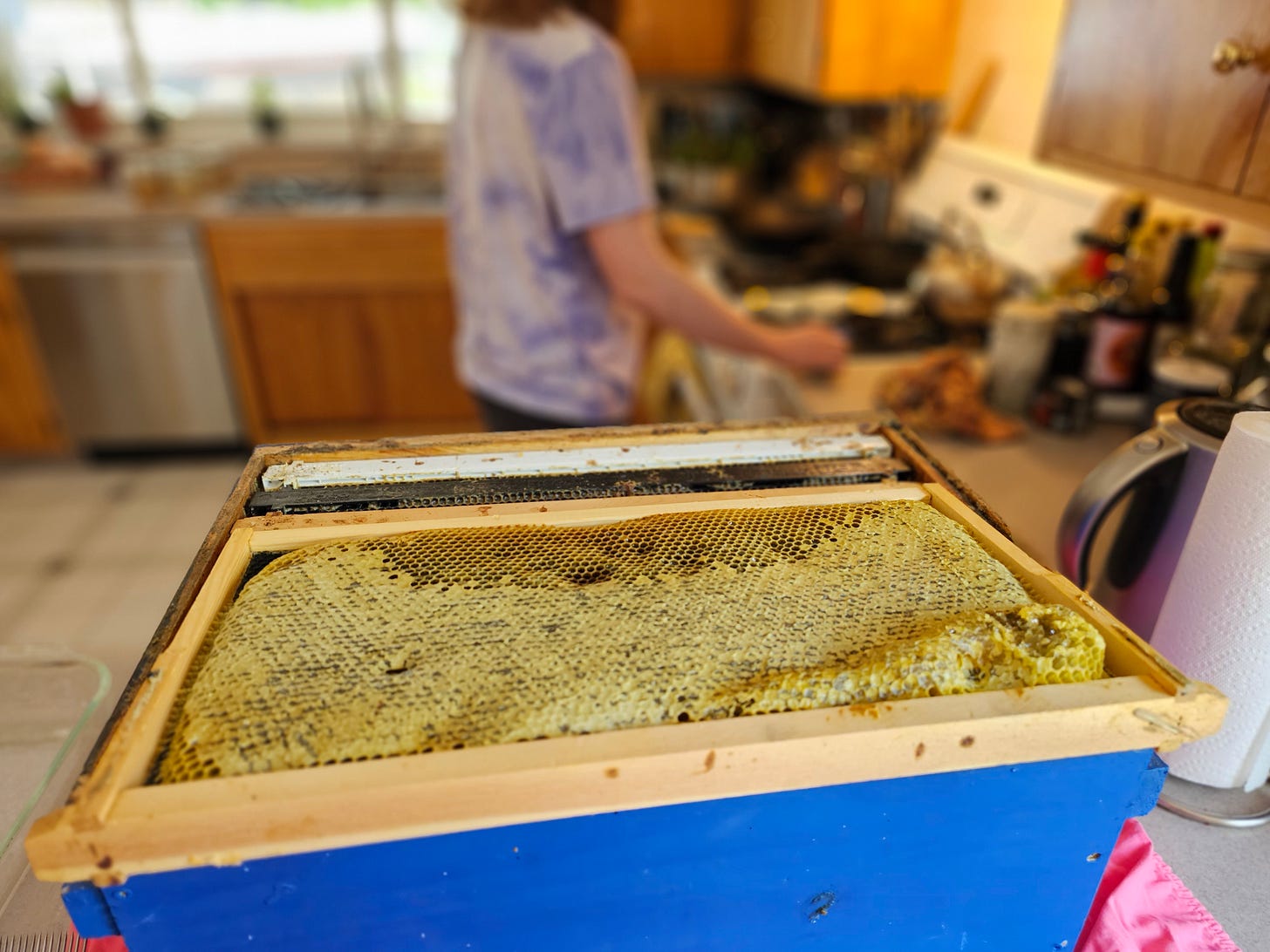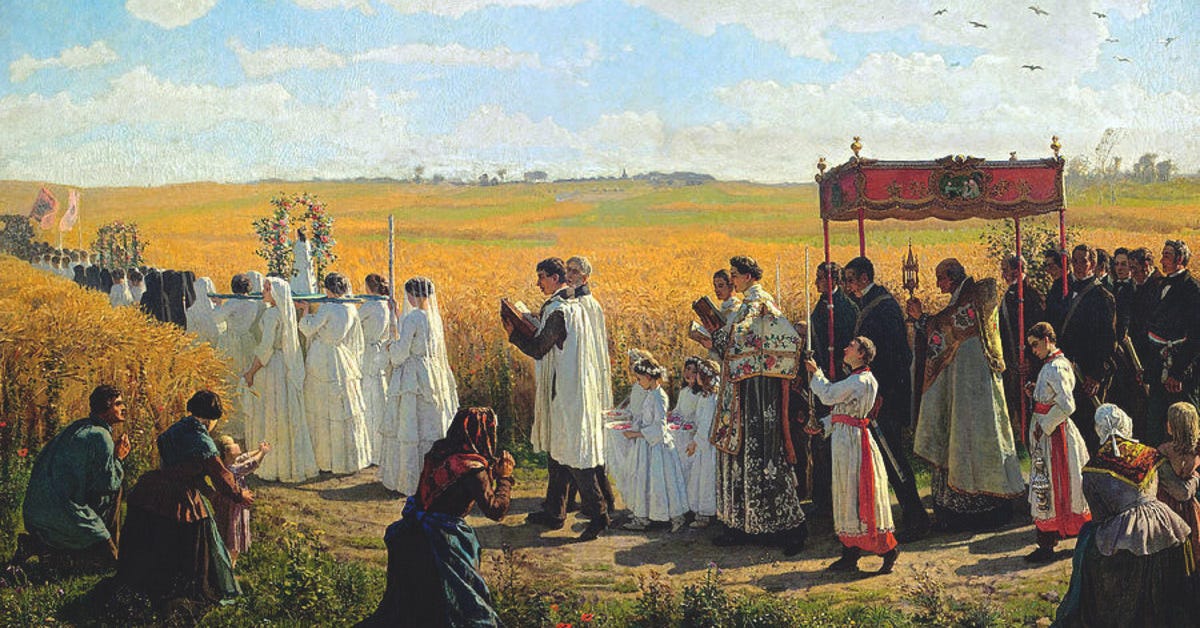Third Time’s the Charmed Hive?
I guess I’ll lead off with the post-mortem on last year’s hive (cheery, right?):
1) The queen swarmed off with at least half of the bees last summer, in early August when we were gone on vacation. Our neighbor witnessed it before they quickly moved on from his backyard tree. 2) We waited for the homegrown newly hatched queen to make her (thankfully successful) mating flight, then return to the hive. 3) The new queen did lay eggs, but not anywhere near the number the old queen did. 4) Smaller, weaker hive going in to the winter. 5) Plenty of food but the winter was cold overall. We had sufficient wind block but should have insulated more. 6) By spring, they appeared to have frozen to death in their winter cluster.
So we are starting over again, again. Third year, new supplier, new mix (Italian-Carniolan honeybees), and hopefully better outcomes. The new bees settled in quickly to their hive box, with plenty of waggle dances to guide the foraging flights. (Go ahead, click here for the Phineas & Ferb Waggle Dance Song.) They are the gentlest bees we’ve had so far; Phillip wouldn’t have needed to suit up to move them and they politely fly around us if we’re standing in their flight path. They appear to be very Midwestern; you can practically hear the “Ope, sorry!” as they narrowly miss bumping into us on their homeward descent. This might not be far from the mark, as researchers have discovered that bees say "whoop" when they bump into each other. The Carniolan side of their honeybee family, which hails from Eastern Europe, is genetically bred for cold weather foraging, winter survival, & gentleness. The Italian side is known for their hardworking foraging habits & their artistic honeycomb patterns, but not so much for their winter survival rates.
Last year’s bees (who were a wee bit aggressive/ highly territorial, especially the first month or so) did produce an awful lot of honey. We left them beyond-ample stores for winter survival, and there were still many partial frames of capped honey in the hive. So we did our first honey harvest, and it is delicious. You can see more of the honey process here, in our Instagram stories (click through to the last few shots, or browse them all for our beekeeping journey).
Rogationtide
The Rogation Days are an ancient part of the agrarian liturgical year, but this is the first year we’ve observed them in our family. Our celebration was a last-minute, cobbled-together affair but definitely worth adding to our schedule of liturgical feasts. Rogationtide is comprised of the 3 days leading up to Ascension Thursday, which is always 40 days after Easter, as it celebrates Christ’s ascension into Heaven after 40 days spent on Earth in his risen form. Since the earliest possible date for Easter is March 22 (it’s a moveable feast based on the lunar calendar & on the Church’s fixed marking of the Equinox on March 21), Ascension Thursday is always in May.
The origin of the Rogation Days can be traced to Gaul in the late 5th century and it only really fell out of practice in the 20th century, then was formally removed from the church year in 1969. An interesting historical and theological discussion on why they were removed and a case for their reinstatement can be read here. I tend to think these days number among “…and some things that should not have been forgotten were lost,” as recounted by Tolkien’s Galadriel in The Fellowship of the Ring.1
Technically, April 25th was marked for celebration as the Major Rogation Day, and the days leading up to Ascension Day were Minor Rogations. The Latin rogare means to ask, and in rural areas the requests to God were for healthy crops and good harvest. Prayers were accompanied by fasting & penitence, which was a break in the feasting customary in the season between Easter and Pentecost. Despite the penitential aspect, by the 8th century it had also become an occasion of merriment as the entire parish took a springtime walk together, followed by feasting and games. 2
There are various recorded traditions associated with Rogationtide. The ones we chose to incorporate this past Monday evening (1st day of Rogationtide) were blessing the 4 corners and “beating the bounds” of the field (our fenced garden). We added holy water from our church to a watering can filled from the rain water collection tank, made an asperging tool from sticks, twine, & pine needles, and used them to sprinkle fling holy water over the 4 corners of the garden. Then we handed larger sticks to my nephews, who used them to beat the garden borders. We processed meandered over to the bee yard, where Phillip sprinkled the new hive with holy water.
There are multiple sources for Rogation prayers. For the blessing of our new bee colony, we used this from River Cottage Farm. For the garden blessing, I read S.E. Reid’s prayer from her Substack (which I’d encourage you to subscribe to):
Then we feasted on flan made by my mom, in honor of the Spanish St. Isidore the Farmer, whose feast day it was. Because celebrations, no matter how quickly thrown together at the end of a busy day, should always include food.
Survey results
Last week’s survey asked readers their preference for a posting day for the newsletter. The winning choice was Wednesday/Thursday. So that may be how we proceed in future. However, Sunday was in the lead the first few days of the survey, so I’m curious to see the stats on today’s email.
Here’s a close-up of some honey and comb from our harvest this week:
I hope this week brings you gardening joy!
—Erin, in Michigan
Affiliate link. If you purchase a book through this, we receive a bit of change at no extra cost to you.
The origins of this and many other liturgical & agrarian customs are detailed in Eleanor Parker’s fascinating book, Winters in the World: A Journey Through the Anglo-Saxon Year. Again, affiliate link.












Polite Midwestern bees! Love it! 😄
I love all the information shared. Wish I could retain some of the knowledge.
Hoping your new bees have the gentle personalities they seem to be showing!
Wishing everyone to bee well this week!